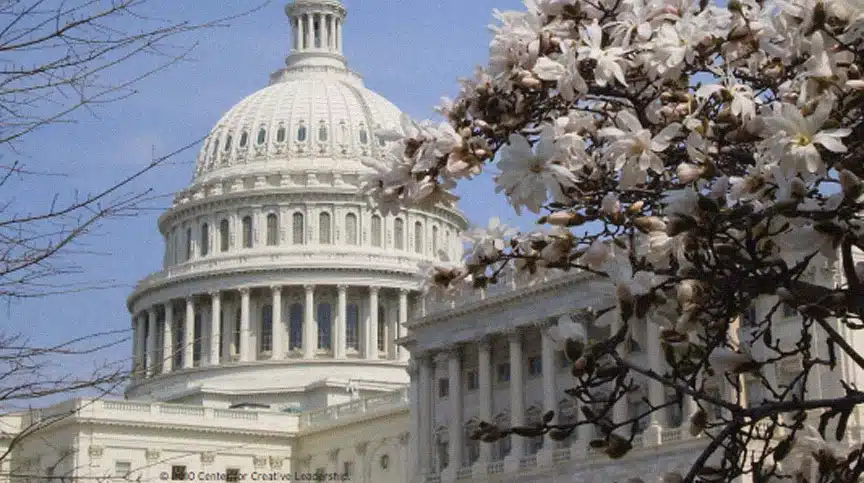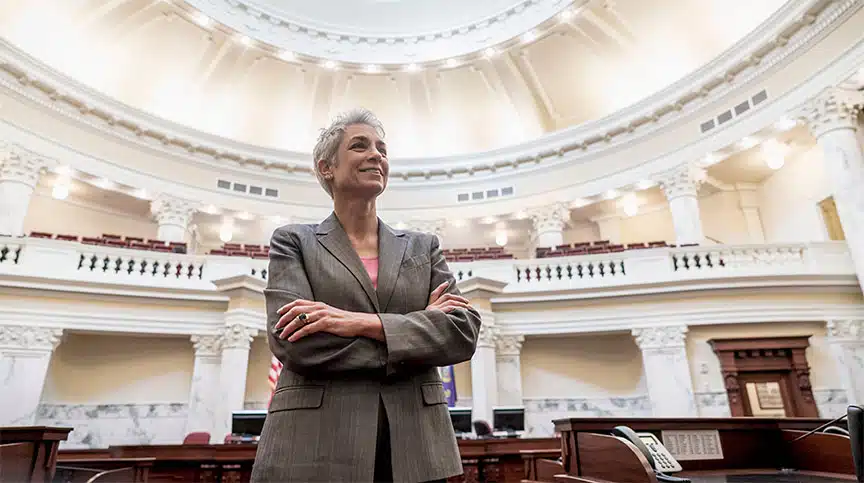The nature of government is changing. Social networks and media are creating a new level of transparency. Generational shifts, technological advancement, revenue challenges, and ever-present political change underscore the kinds of constant shifts occurring within the federal space.
Government leaders today face an array of challenges, which we explore, along with the implications for development, below.
Top Challenges of Government Leaders vs. Business Leaders
Do leaders in the public sector face different challenges from their private sector counterparts? If so, do those differences alter the skills and behaviors required for good leadership? How might these differences impact leader development?
To answer these questions, our researchers studied 1,500 U.S. federal government civilian leaders and a sample of more than 500 private sector business leaders who attended leadership programs over the past 5 years. We found that leaders from both sectors named similar leadership challenges and prioritized them in parallel, for the most part. Here’s what we found:
| Government Leaders | Business Leaders | |
|---|---|---|
| #1 | Managing & Motivating Subordinates | Personal Leadership |
| #2 | Personal Leadership | Managing & Motivating Subordinates |
| #3 | Organizational Operations & Performance | Organizational Operations & Performance |
| #4 | Talent Management | Balancing Multiple Work Priorities |
| #5 | Balancing Multiple Work Priorities | Boundary Spanning |
| #6 | Boundary Spanning | Talent Management |
| #7 | Influencing | Influencing |
However, we also noted that the unique setting and context of the public sector lead to subtle, but very real and noteworthy, differences, too.
A deeper look at the data shows that the government environment impacts some of the challenges its leaders face. In particular, many government leaders feel acute financial and constitutional constraints that may impact their ability to motivate employees, navigate fiscal concerns, deal with problem employees, and drive organizational change innovation in a traditional environment with complex regulations and bureaucracy.
These key differences alter how public sector leaders should behave, the skills they need to succeed, and the development necessary to help them meet those challenges.
4 Skills Government Leaders Need to Succeed
To understand the skills government leaders need to be successful in an environment that is volatile, uncertain, complex, and ambiguous (VUCA), we conducted additional research, based on an analysis of leadership effectiveness data from more than 16,000 managers working in the government sector who attended our leadership programs over a period of several years.
As noted in our white paper, we found 4 skills most critical for government leaders’ success:
- Leading employees;
- Leading change;
- Developing participative management skills; and
- Understanding boundaries and how to span them.
We also found that the ability to put people at ease is the leadership competency most highly rated in terms of importance among the government leaders we studied.
Strength Areas for Government Leaders
Our research shows government sector managers are skilled in several important areas, such as resourcefulness, straightforwardness, and composure, as well as building and mending relationships, decisiveness, and doing whatever it takes.
Understanding differences is another strong point of government leaders. Those who are able do so are seen as quick to acquire new knowledge, resourceful, and willing to do whatever it takes to achieve agreed-upon goals.
These findings show that government agencies have a group of interpersonally skilled, intelligent, and committed leaders — a powerful asset on which to build.
Access Our Webinar!
Watch our webinar, Government Leadership After Crisis: Resetting Your Mindset and Expanding Your Tool Set, and learn a research-based model to describe and apply the 3 critical tasks of leadership in government.
Challenge Areas for Government Leaders
3 Top Leadership Priorities
Clearly, government leaders are recognized for their commitment, service to the nation, and unwavering dedication to their mission. However, these same leaders fall short in several important areas.
The results indicate the top priorities for leader development in the government sector involve increasing leadership capacity in these key ways.
1. Leading Employees
Our research shows that leading employees is something managers learn from a variety of experiences during their careers. Yet while leading employees was seen as the most important competency for government leaders, it was rated as next to last, in terms of leader effectiveness.
Leading employees in the public sector is highly challenging, and government leaders can benefit from further development in the key skills required to create direction, alignment, and commitment among their employees. Core skills in this arena include identifying and hiring talented staff, delegating and following up, and developing employees.
Agencies that seek to retain their top talent and develop them in this area often focus on identification and development of high-potential employees, making sure they have training and opportunities that offer them a broad and deep foundation for moving forward within the organization.
2. Responding to and Managing Change
Change management was rated as important by more than half of those who responded in our study, but was in the bottom half of the leadership competencies in terms of effectiveness.
Government sector leaders can learn more about responding to and managing change and can develop a more participative leadership style. This means placing greater emphasis on involving others in decision-making and getting more input before taking action. These are skills that can be developed through training initiatives focused on enhancing self-awareness and by working with a coach over time.
Developmental assignments are the linchpin for leaders with the confidence to manage change. Assignments that are outside of their primary technical area provide a different perspective. They can see how their technical area fits into the greater whole, so they can better understand and manage change across the organization.
3. Providing Cross-Organizational Experiences to Increase Boundary Spanning
Too narrow a functional or departmental orientation is the most likely reason for managers in government to derail.
Leaders at all levels can encourage the development of this leadership competency by providing opportunities for their direct reports and high-potential leaders to reach outside their own functional or departmental experiences. A diversity of experiences (different assignments, developmental relationships, classroom training) can round out skills and broaden perspectives, reducing the possibility of derailment.
Government leaders who seek to remain in their own silo are doomed to obsolescence. Without access to additional resources — even when unit performance or challenges merit those investments — leaders may need to collaborate even more intently and effectively with peers to accomplish the mission. That’s why it’s critical that government leaders develop the ability to collaborate across boundaries.
Participative management encourages the involvement of employees at all levels of the organization to create resources through relationships and organizational synergies. Often, this includes increasing collaboration and communication across agency and departmental silos.
Implications for Leadership Development of Government Leaders
In a VUCA environment, government organizations can’t afford to put resources into generalized leadership development and simply hope they’ll achieve the right outcomes.
Instead, well-targeted leader development initiatives are essential to close critical competency gaps and ensure individual and organizational success in the public sector. Effective and well-trained government leaders will be able to meet the nation’s needs, manage the work, and find innovative and effective solutions to complex challenges.
Using our research on government leaders as a starting point, public sector agencies and organizations have the opportunity to reassess their current leadership capacity and can begin focused efforts to develop skills their leaders need, both today and for the future.
Ready to Take the Next Step?
We’ve been delivering leadership development programs for public sector employees for decades. We can help government leaders develop the skills they need to overcome challenges and succeed. Learn more about our leadership programs that are GSA-approved for individual development, or partner with the experts in our Government practice.












